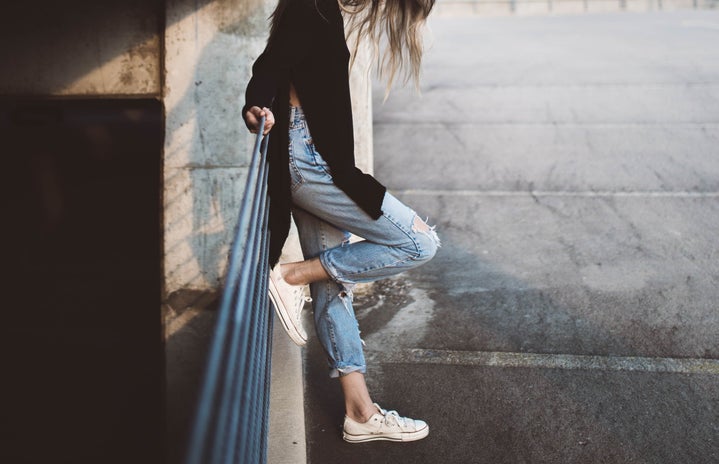We love the glitz and glam of fashion shows, but have you ever thought about what goes on behind the scenes? Her Campus NYU caught up with Autumn Samuels, a rising Steinhart Senior and president of the Fashion Business Association, to chat about everything that goes into planning their Annual Charity Fashion Show.
So how did you initially get involved with FBA?
“I got started with FBA my sophomore year of college, when I got back from London. I did my whole freshman year in London. So when I got back, I knew I wanted to be involved with a fashion club, and [Fashion Business Association] was one of the only ones on campus. That’s why I joined and then I was immediately put on as PR Chair last year in preparation for the show because they needed somebody and I applied and got it. This year I’m President, so it’s been a lot of transition.”
What has the process been like planning for the Annual Charity Fashion Show?
“My main job right now as president is that I’m overseeing all of the other jobs that are on e-board and that includes budget, marketing, PR, which is a big part of it because that’s where most of our sponsors come from, which in a lot of ways legitimizes the show because even though it’s student-run, student-operated, and student-designed, when you have swag materials it legitimizes a fashion show because it’s something people look for. This year, I’m running it alone, meaning I don’t have a co-president, which has always existed before this, so it’s a lot to do alone. In terms of PR, what I did last year, it’s organizing and controlling all of the sponsorships we get. The fashion show does go to charity for the CFDA, so the sponsors are entirely donating to the show in hopes of helping with proceeds for the charity. It ranges in terms of brands and it’s a really good opportunity for people to network within the PR team and make connections within the industry because they’re contacting people who may be higher up on a brand’s press team. We get some pretty good brands. This year we already have Loreal, MAC, a bunch of other nice beauty brands, some clothing and jewelry brands, too, which are donating, which I’m really excited for.”
How are you able to find brands to partner with for the show?
“I have a designated PR team people apply to, and there’s usually about 20-25 people on the team. I really leave it up to my teams as far as who they want to reach out to because it really only starts with an email or a cold call. The guidelines are mostly being realistic, obviously a brand like YSL isn’t gonna be donating to our student fashion show, and thinking about what can actually be offered and what brands they can imagine would donate product to a student show. That doesn’t mean that all the brands are up-and-coming or new or unknown, but we also like to help out the New York community, like last year Artists and Fleas donated the bags, which was a really great sponsorship because Artists and Fleas is New York artists, so in a way we were helping them too, and a lot of them are young students too.”
Where do the designers come from and how do you evaluate which ones end up in the show?
“Our creative director, Sarabeth Wong, actually is in charge of all of the creative talent, which includes designers and models, so she screens both of them. It’s not really an application process, but designers have to show their portfolios and guarantee that they can complete pieces, which isn’t always easy. Most of the people who do it are usually design students, and they have a really, really tough schedule and it’s very high pressure. When you go to where we usually pull from like Parsons or FIT, it’s a really high pressure environment in terms of being a fashion design major, and construction has to be a guarantee. [Sarabeth] looks for unique talent or people who are very ambitious and could complete for show. For models it’s kind of the same, but it’s more like people who want to try it out, but haven’t had the opportunity. Models have to come in for a walk try-out, come in for headshots, and then she hand picks people, so it really operates like a regular fashion show in terms of choosing talent. There’s been some NYU people in the past, but it’s hard because it’s not really a major here. There’s some individuals who do it all themselves, which is amazing. It’s a combination of people who reach out, and people she seeks out that she knows of; she does a lot of independent networking during the summer to find people who are coming in as freshmen or who’ve expressed interest before.”
What has been the most fun part of planning the show?
“The most fun part is probably the fact that I’m getting to see it come together and because I’m the only president, seeing it come together is the most exciting part. Obviously when May 10th rolls around and it’s happening, good or bad, that will probably be the most exciting part for me because it means all the hard work has paid off.”
What advice would you give to anyone else trying to plan a fashion show?
“I would definitely recommend that you have a lot of patience. I kind of want to task-manage everything when something goes wrong or there’s little hiccups, but ultimately if I don’t have that person on my team fix the problem then they’re not going to be able to learn from it and if I just fix it for them they’re gonna feel like I’ll always do it and I physically and mentally cannot sometimes, so that can be a big thing if you’re in charge of the show. Ultimately, make sure you’re really passionate about what you’re about to create because it’s important that the designers have the best showcase possible, but also you are the face of it and if you don’t like what’s being shown, anything from the bags to the lighting choice — you have to love it, I think. That’s what I’m finding out now as I’m doing it I’m trying to make sure that it feels like me and feels like the right fit for what we’re trying to do, keeping that vision in mind I think is important.”
What is the goal of Fashion Business Association and why should people join?
“I think the main goal of FBA is really to allow people to network. A lot of our panels and discussions are with speakers or with previous students who now hold top jobs in the industry. I think because at NYU there’s no fashion major, or a fashion outlet per se, people have sincere interest in it, but can’t explore that or they don’t know where to go in terms of finding an internship or finding a job. We do a lot of cool events in and out of house and obviously the fashion show’s a big one. People don’t usually get to produce something as big as a fashion show or may have never been to one. I think the fashion show provides a real view of what the fashion industry encompasses in terms of high pressure and high stakes whether you’re on the design or the advertising and marketing end of it.”
If you’re interested in networking within and learning more about the business side of the fashion industry, check out FBA’s Facebook for upcoming events. We hope to see you at the FBA Charity Fashion Show on May 10th at 8pm in the NYU Kimmel Center Rosenthal Pavilion!



